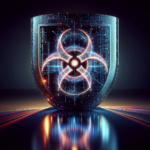Understanding Quantum Cryptography
Quantum cryptography emerges as a groundbreaking method of securing communications through the principles of quantum mechanics. Unlike classical cryptography, which relies on mathematical algorithms, quantum cryptography exploits the unique characteristics of quantum bits, or qubits, to enhance security.
What Are Qubits?
Before diving deeper, it’s essential to grasp what qubits are. In classical computing, the basic unit of information is the bit, which can either be a zero or a one. A qubit, however, can exist in a state of zero, one, or both simultaneously due to a property known as superposition. This allows quantum systems to process vast amounts of information more efficiently than classical systems.
The Concept of Quantum Entanglement
Another fundamental aspect of quantum cryptography is entanglement. Entangled particles share a connection such that the state of one can instantly influence the state of another, no matter how far apart they are. This phenomenon can be harnessed to create secure communication channels that are exceptionally difficult, if not impossible, to intercept without detection.
Why Quantum Entanglement Matters
Entanglement allows the creation of what is known as a quantum key distribution (QKD) system. In essence, QKD utilizes the properties of quantum mechanics to enable two parties to generate a shared, secret random key. Any attempt to eavesdrop on this quantum key alters the state of the qubits, immediately signaling to both parties that the communication has been compromised.
Quantum Key Distribution (QKD)
QKD is often referred to as the crown jewel of quantum cryptography. The most common QKD protocol is BB84, developed by Charles Bennett and Gilles Brassard in 1984. In BB84, polarizing photons are used to encode the key bits.
The Mechanism of BB84
In single-photon transmission, the sender (commonly referred to as Alice) encodes each bit of the key in the polarization state of single photons. For example, she might use horizontal and vertical polarizations to represent zeros and ones, and diagonal polarizations to represent the measurement bases. The receiver, or Bob, randomly chooses a basis to measure the incoming photons. After transmitting a series of photons, Alice and Bob compare a subset of their measurement choices over a public channel to determine the bits of the key they can safely use.
Security Through the Uncertainty Principle
The inherent uncertainty principle in quantum mechanics assures the security of the BB84 protocol. If an eavesdropper (let’s call them Eve) tries to intercept the photons, her actions would undoubtedly change the polarization states. This alteration results in detectable anomalies when Alice and Bob later compare their chosen measurement bases.
Ensuring the Integrity of the Key
Once certain regions are verified as secure, Alice and Bob perform a sifting process, filtering out any inconsistent data and resulting in a shared key with a guarantee of integrity and authenticity. This key can then be used for encrypting messages using classical cryptographic techniques like the one-time pad or AES.
Other Quantum Cryptography Protocols
While BB84 is the most well-known QKD protocol, several alternatives have emerged, each with its unique features and advantages.
Leveraging Entanglement: E91 Protocol
The E91 protocol, developed by Artur Ekert in 1991, functions similarly to BB84 but relies on entangled particles. The key here is that the security stems from the correlations of the particles rather than their individual states.
The Process of E91
In the E91 protocol, Alice and Bob each receive one particle of an entangled pair. By choosing different measurement settings, they can obtain a shared secret key while ensuring that any attempts at interception are immediately detectable due to the violation of Bell’s theorem.
Device-Independent QKD
A more advanced concept involves device-independent QKD, which does not rely on the trustworthiness of the devices used in the communication process. This approach addresses potential vulnerabilities in the hardware itself, ensuring that no matter the quality of the devices, the protocol remains secure.
The Advantages of Quantum Cryptography
The rise of quantum cryptography is significant for several reasons, particularly in enabling secure communications in an increasingly digital world.
Unbreakable Security
The primary advantage lies in its potential for unbreakable security. The laws of physics govern quantum mechanics, ensuring that any attempts to eavesdrop on the communication are immediately detected. This offers an unprecedented level of security that far surpasses traditional cryptographic measures.
Future-Proofing Against Quantum Computing
As quantum computers become a reality, the fear of classical encryption systems being rendered obsolete due to their susceptibility to quantum attacks looms large. Quantum cryptography provides a solution to this issue, creating secure protocols that are resistant to the power of quantum computing attacks.
Real-World Applications
Quantum cryptography is already seeing practical applications in various sectors. Financial institutions, government organizations, and military communications are beginning to implement quantum key distribution systems to protect sensitive data from interception.
The Challenges Ahead
Despite its promise, quantum cryptography is not without its challenges.
Infrastructure Limitations
Currently, the deployment of quantum cryptography requires extensive infrastructure, such as fiber-optic networks optimized for transmitting quantum signals. Setting up these systems is costly and technically challenging.
Distance Constraints
QKD is also limited by distance. The quality of the quantum signals diminishes over extended distances due to factors like attenuation. Research into satellite-based QKD systems aims to overcome these hurdles by enabling global secure communications.
Emerging Competitors
While quantum cryptography leads the charge in securing communications, other emerging technologies could provide competitive alternatives. Post-quantum cryptography is a developing field that seeks to create quantum-resistant algorithms for classical systems.
The Path Forward
Quantum cryptography is undoubtedly a fascinating and rapidly evolving field. As researchers continue to innovate and refine these technologies, the landscape of secure communications will likely undergo a significant transformation, one where security is not just a privilege but a universal standard.








